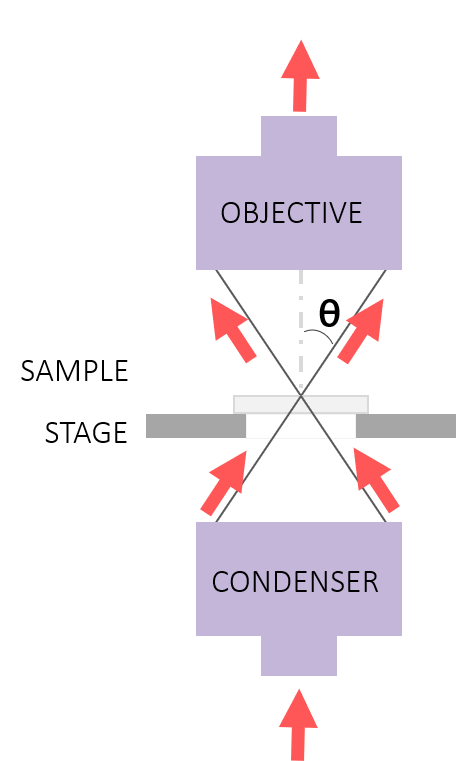
Background
In a transmission experiment the absorption of infrared light is measured as it passes through the sample. The amount of light absorbed is proportional to the concentration (Beer-Lambert law) in the simple case of a single absorbing species at a specific energy.
In an infrared microscope there is an objective and condenser with matching magnification. The optics define the area to be measured and focus, collect and transmit the infrared radiation from the light source to the sample to the detector. Infrared microscopes use reflecting Schwarzschild-type objectives.
Samples
Transmission can be used for solid or liquid samples. Transmission requires that the sample be very thin, 5-10 µm if possible, and flat. Samples can be either free-standing or deposited on to an IR transmitting window, such as CaF2. For more information on IR windows and sample considerations see the User Guide.
Results
With a high-quality sample, transmission measurements result in diffraction limited chemical imaging with high signal-to-noise.